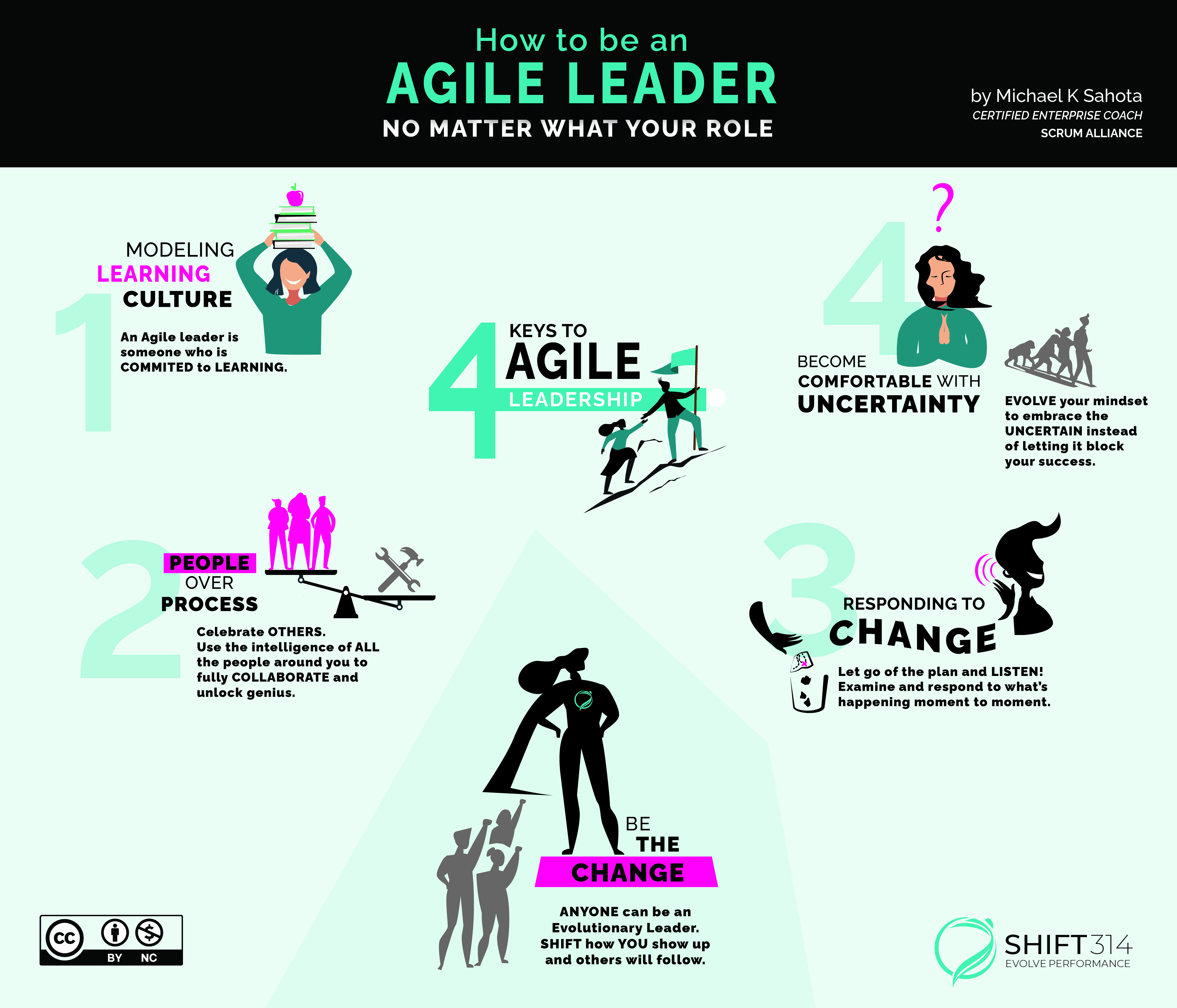Learn about purchasing for teams
How to Be an Agile Leader — in Any Role

The core of agility is about enabling everyone’s power and capability — to create leaders at all levels and bring out the fullest potential of each person on every team. The real benefits of agile come from everyone acting as an agile leader. So what does that mean?
What Does it Mean to Be an Agile Leader?
Agile leadership is not about scrum or kanban. It's not about processes or work practices. It's about how you see the world and relate to the people around you. An agile leader is somebody who has taken his or her ego out of the way of working with others — somebody who enables and exemplifies great collaboration.
Who Can Be an Agile Leader?
Anyone can be a leader in any role, no matter what part of the organizational system they’re in. An agile leader is someone who lives by and follows an agile mindset to create a ripple effect through our organization.
Leadership is the reflection of how an individual shows up. It's not a function of role; any team member can be a leader in any role. Being a leader means people choose to follow you because they admire or are inspired by who you are as a person. It’s about how you show up, behave, lead your life, and treat others.
Sometimes being a leader means proposing an idea. At other times, it is following other people's ideas and supporting them. Sometimes being a leader means posing a question and then stepping back to let others’ brilliance shine.

The Keys to Agile Leadership
We can understand what an agile leader is by looking at the Agile Manifesto for Software Development. Each item can be understood as the items to focus on to embody agile leadership. There are four key areas to pay attention to:
Modeling a Learning Culture
The top line of the manifesto says, "We are uncovering better ways of working." An agile leader is someone who's committed to evolving better ways of working for themselves and for others around them. It’s someone who is committed to learning.
People Over Process
In our society, we’re not taught how to be aware of our inner state or how our actions are impacting others. It's only in rare places, like improv, where we learn to celebrate others. This is a hard skill that requires commitment to our own evolution. To embrace agile leadership, become aware of the impact you have in relationships with those around you. Are you creating environments and processes where people are considered first?
Related Webinar: How to be a People Centric Scrum Master
Responding to Change
Agile leadership means having the humility to let go of the idea that we know the answers and that we're sure of exactly what to do. Instead, the agile leader is ready to examine and respond to what's happening moment by moment. For leaders, this means letting go of the plan and fully listening to what other people on the team think.
Becoming Comfortable With Uncertainty
There's a lot of talk in the agile space about complexity, yet what we're really talking about is becoming comfortable with the uncertainty that exists in our organizational systems and our projects. As we embrace that uncertainty, we realize we must evolve to create the greatest level of success. The only way to navigate that complexity is to use the intelligence of all the people, fully collaborate, unlock genius, and celebrate the intelligence of others around us.
What Is the One Secret to Becoming an Agile Leader?
Being an agile leader requires a willingness to evolve yourself. This goes beyond a “learning mindset.” It’s what we call an “evolutionary mindset”: Showing up ready to learn about ourselves, our behaviors, beliefs, and perceptions. This invites a deeper level of self-awareness of our inner state of being, as well as an awareness of how our actions are impacting others.This mindset creates the ability to take responsibility for our actions and creates an ability to evolve systems we interact with.
We use the term Evolutionary Leadership to describe leaders who are ready to evolve themselves. While the concept exists beyond agile, it is also essential for developing as an agile leader.
Be the Change
Any of us can make change without power, budget, or authority. Many people complain about a lack of agile leadership in others. What we have shown here is that anyone and everyone can model agile leadership. The only thing stopping you from living the agile mindset tomorrow at work, is you. The trap we all fall into is wanting other people to follow the agile mindset and not looking at our own behaviors. You can make your environment more agile tomorrow — no matter what the constraints — just by shifting how you show up.
Want to take your Agile Leadership Skills to the next level? Consider becoming a Certified Agile Leader
Related Article
Article: 3 Traits Great Agile Leaders Display (Plus 1 Factor That Doesn’t Matter at All)
========
About the Author
Michael K Sahota is a Certified Enterprise Coach, Certified Agile Leader Educator, and consultant. First becoming a Certified ScrumMaster® in 2004, Michael has become a global thought leader on how to rethink agile to unlocking success. He has trained thousands of leaders worldwide through his highly accoladed Certified Agile Leadership (CAL) Training, featuring the SHIFT314 Evolutionary Leadership Framework (SELF™), an integrated system for scaling excellence with people. In 2012, Michael published the groundbreaking book "An Agile Adoption and Transformation Survival Guide: Working with Organizational Culture." and “Leading Beyond Change: A Practical Guide to Evolving Business Agility” (2021).











